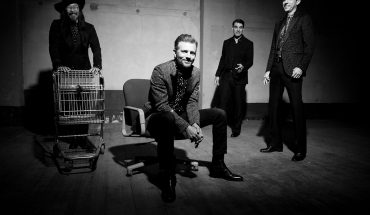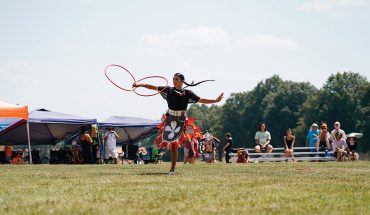by Jessie Ammons
photographs by Jillian Clark
In the early morning hours of spring, pairs of walkers take to the streets of downtown Raleigh. They meet at the Wells Fargo building at 6:30 a.m. sharp, rain or shine, to gather supplies – paper bags, latex gloves, and slips of paper to record their findings – before embarking on their 45-minute route.
“You have to get there early, before predators or other birds or people,” says Audubon North Carolina Executive Director Heather Hahn. She’s explaining the bird conservation organization’s Lights Out program, which works to help birds that are hurt during migration when they fly into tall urban structures at night, and to record any birds that are killed.
Volunteers rely on the first light of day to survey their route. When they find a dead bird, they carefully document the species and location before placing the bird in a sealed bag. Eventually – at the end of migration season – these birds will be donated to the North Carolina Museum of Natural Sciences, home to one of the Southeast’s largest bird collections.
These volunteers aren’t experts or scientists, but passionate nature lovers. “I’m, like, the queen of not a morning person,” says the program’s volunteer coordinator, Elaine McManus. “But birds migrate at least 500 miles. Some will migrate thousands of miles. It’s a perilous journey to begin with; many die just because it’s tiring and they fly over water and they run out of food. If it’s perilous to begin with, anything we can do to help them make it to their destination makes me feel better.”
Raleigh is one of three cities in the state with a Lights Out program. Charlotte and Winston-Salem are others. “Buildings are a big threat” to migrating birds, Hahn says. “It’s estimated that they kill between 365 and 988 million birds a year in the U.S. We’re just trying to minimize that.”
Volunteers also reach out to downtown property managers and ask them to turn out building lights from 11 p.m. to dawn during peak migration season (hence the program’s name). In North Carolina, spring migration lasts from mid-March to the end of May, and fall migration from mid-September through the end of November. “It’s amazing how many birds migrate through,” Hahn says, “even ones that aren’t that common to see on the ground.”
To put that notion to the test, Audubon N.C. put a microphone on top of a building in downtown Winston-Salem last year. In one night alone, it picked up the sounds of more than 200 bird species flying over.
McManus says one of the bittersweet parts of walking the Lights Out morning route is that volunteers sometimes find “species that birders would have trouble finding” during normal daytime expeditions. “So it’s like, ‘Aw man, I’d probably never see that the rest of my life, and here it is, dead.’ ”
Not all found birds are dead, though. Stunned birds still have a heartbeat, and they’re gently wiggled into a paper bag with air holes. Usually by the end of the day, the bird is recovered and can be released back to the wild. “We actually take birds to rehab facilities, too,” Hahn says.
This spring will be the third season of Lights Out Raleigh. A core group of about two dozen volunteers make it happen. Some are retired downtown dwellers looking to add purpose to their morning exercise. Others, like McManus, are searching for community. McManus plugged into Audubon N.C. when she first moved here almost two years ago. She has became friends with her Lights Out partner, and the two often try out new coffee shops after their weekly walk. “There’s one couple that always goes to Raleigh Times” afterward, she says. “They eat breakfast there every single week.”
Regardless of motivation, these volunteers say the program creates a simple way to make a tangible impact. “That’s what’s so exciting and easy and wonderful about it,” Hahn says. “I care a lot about the environment and our world and conservation, and birds are everywhere. There’s always something you can do and everyone can do something. It’s something hopeful to do about everything that’s going on in our world.”





